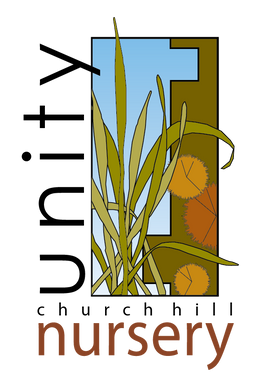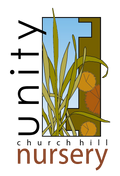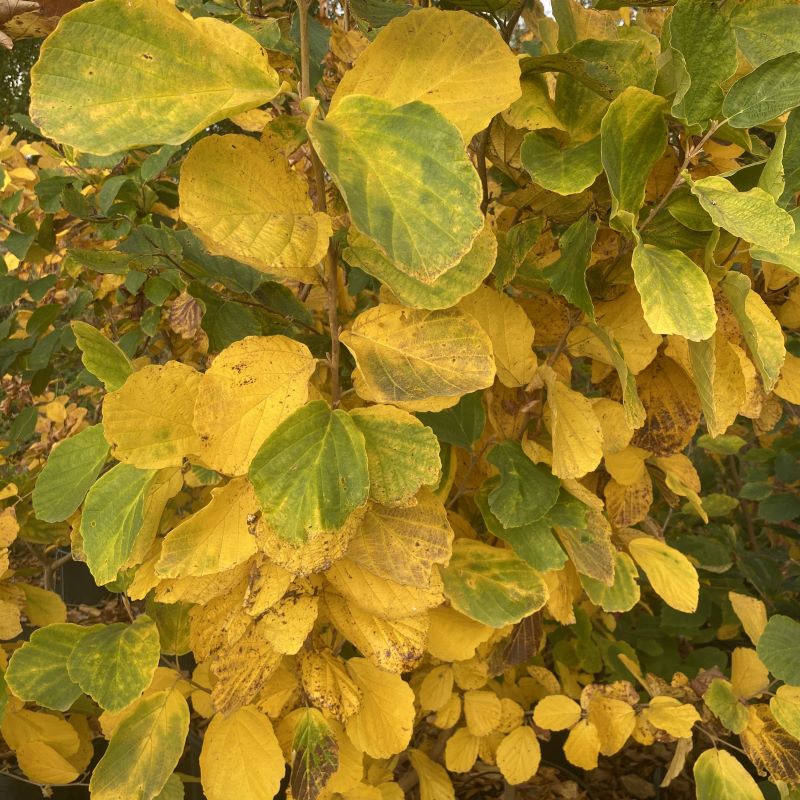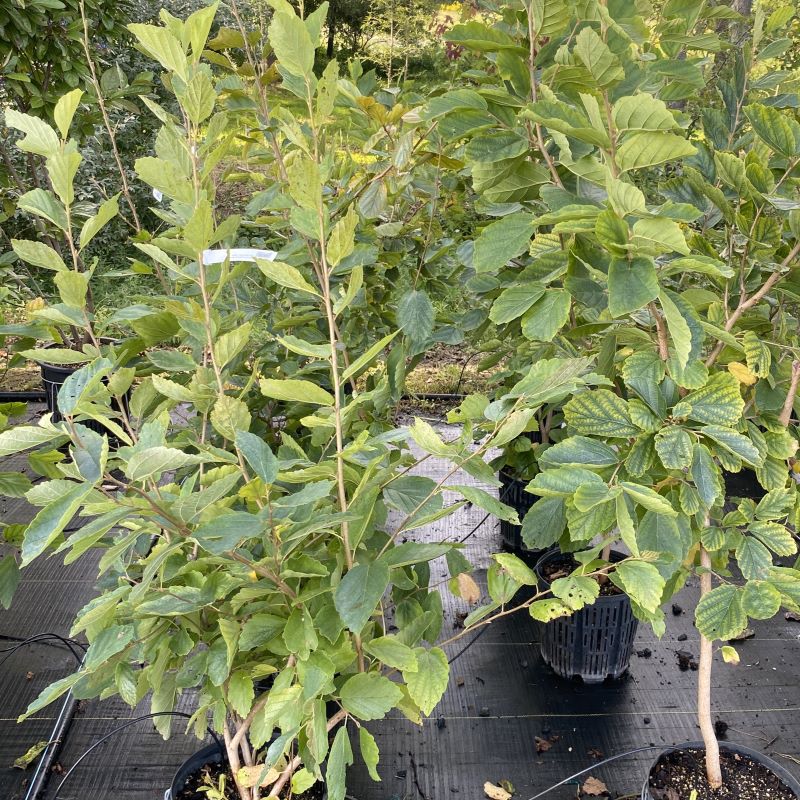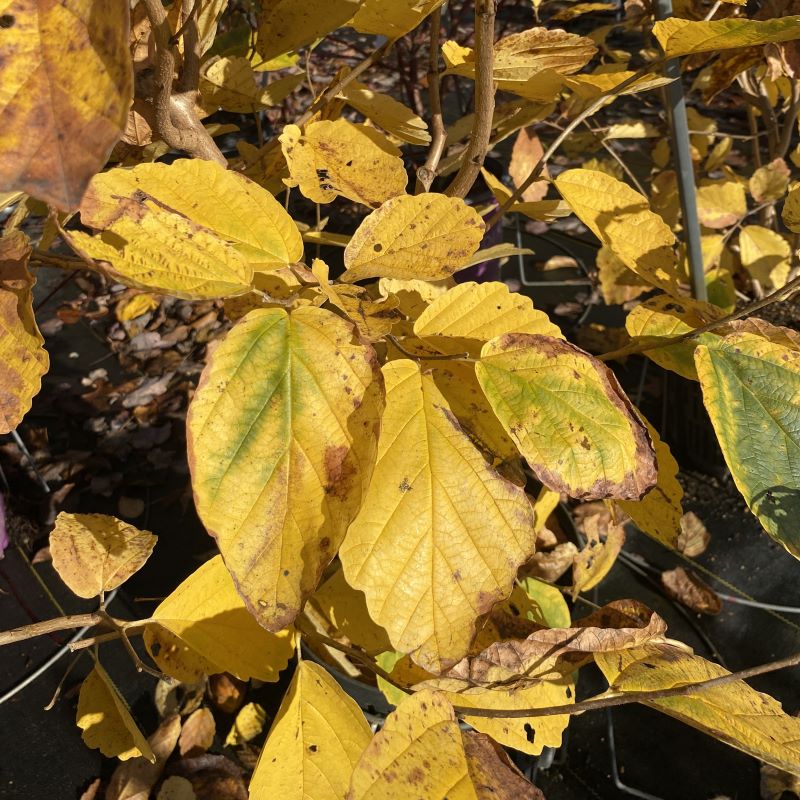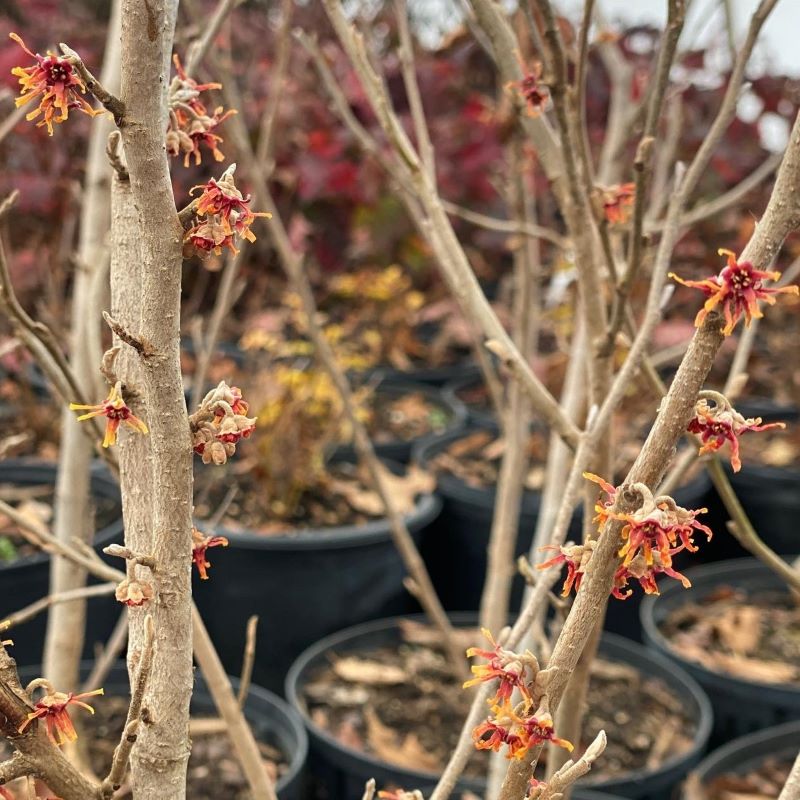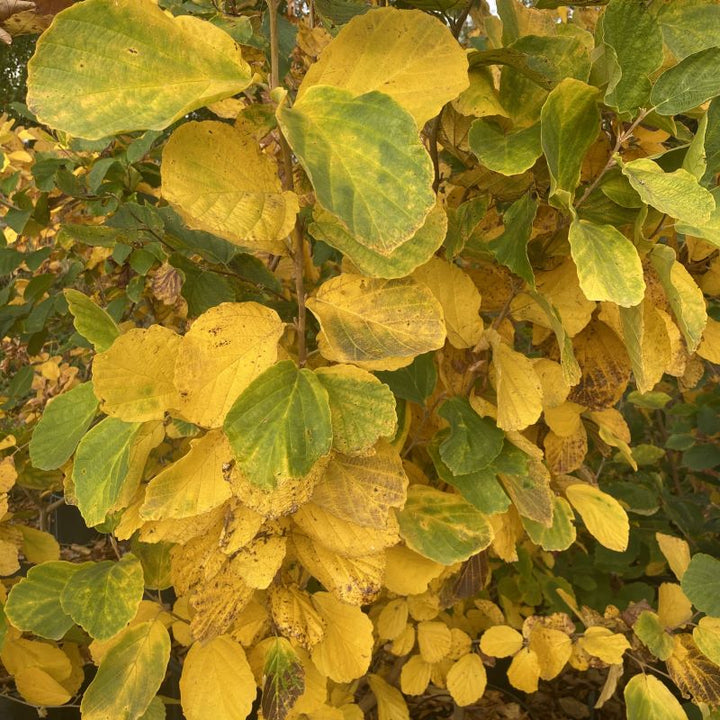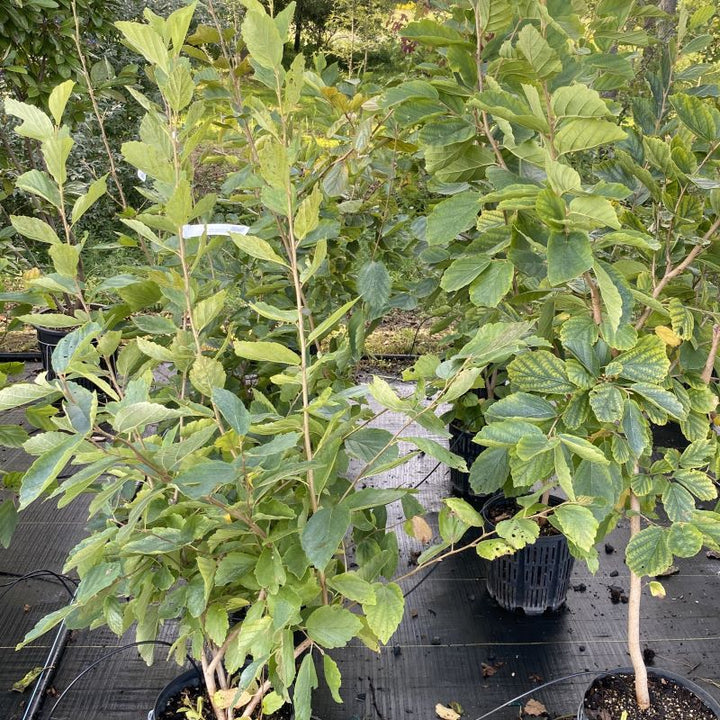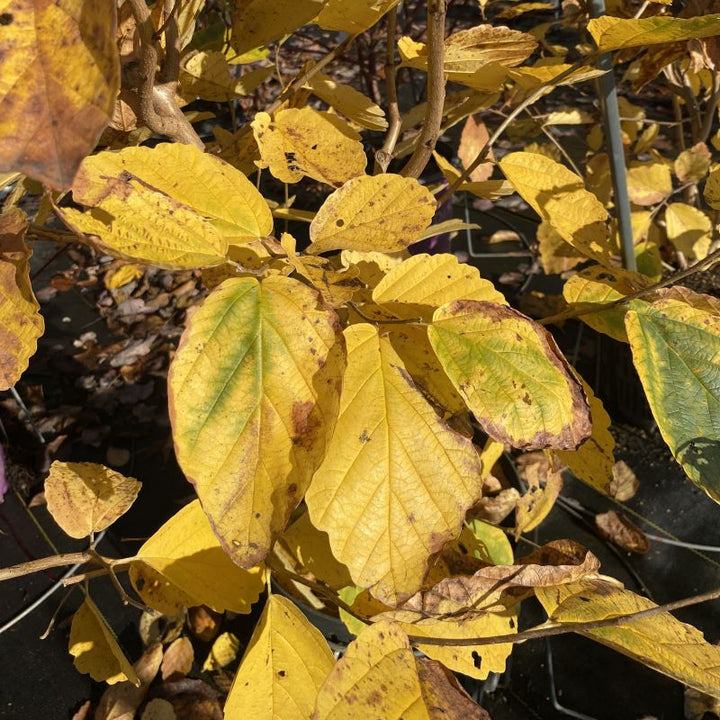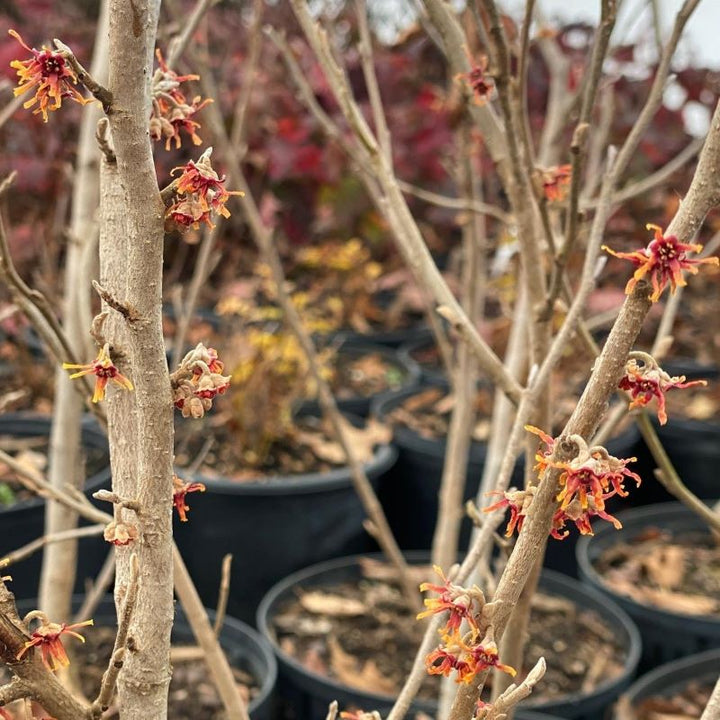Hamamelis virginiana (American Witch Hazel) Unity Grown
- In Stock
- Inventory on the way
Hamamelis virginiana, also called witch-hazel (with any number of spellings) is a deciduous shrub or small tree, typically found in understory environments across the eastern half of the United States and Canada. In spring, witch-hazel produces new foliage, which slowly unfurls into mature, dark green, deeply toothed leaves with a beautiful texture. While plants are perhaps most vivid looking in the summer, autumn is when witch-hazel truly stands out. After the plant's dazzling fall show of golden yellow leaves has wrapped up and leaves have started to follow, the plant's seed pods, which typically take a full year to develop, begin to literally pop, sending seeds flying through the forest understory! During this same time, the plant's unique, fringey, lemon-yellow flowers begin to bloom on the plants' bare branches.
Hamamelis virginiana typically grows to about 10-15' tall, but occasionally reaches greater heights of up to 35', quite large for an understory plant. As an understory tree, witch-hazel performs well in almost any light, soil, or moisture condition, though it prefers well-draining soils with some acidity. In much of the northeastern US, witch-hazel is among the last native plants to flower in the fall, blooming well into November and even December; some blooms, dependent on cultivar and slight seasonal differences, may open as late as January or February in mild winters. All of this activity through the fall and winter is sure to add a ton of seasonality, and the tree's appearance is only one half of the story, since trees play host to a number of butterfly and moth larvae as well as a huge variety of songbird species.
